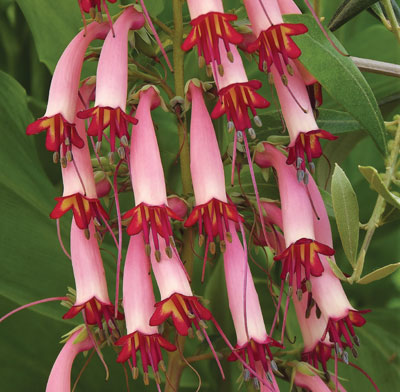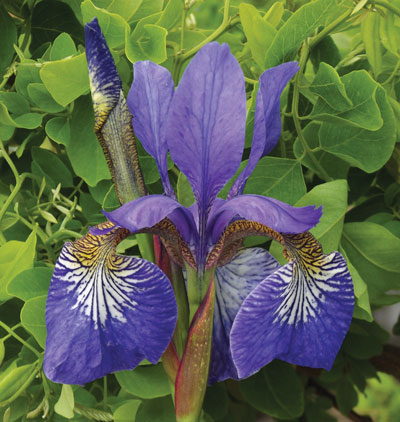
Overcoming customer objections is probably the biggest obstacle to sales
that we face today. In my opinion, far too many people are talking
themselves out of enjoying their own gardens.
Overcoming customer objections is probably the biggest obstacle to sales that we face today. In my opinion, far too many people are talking themselves out of enjoying their own gardens. By way of example, how many times have you heard: “I don’t have time to water,” “My plants always seem to die,” “I don’t have enough space,” or “Why should I bother for a few days of flowers?” If you’re like me, you are hearing these types of statements a lot these days, but just the fact that a customer has made the effort to come to your nursery or garden centre means that he or she is actually interested in buying plants – they just don’t know which ones will work for them.
 |
|
| This long blooming “Pink Elf” Phygelius and Rectus cross is perfect for customers who want lasting colour in the garden. Advertisement
|
This is where we really need to do a better job of understanding our primary product: plants. Far too many nurseries have sales staff that are woefully ignorant of the trees, shrubs, vines and perennials they sell. We need to do a better job of training new sales staff in regards to plant needs and uses, or consider hiring people with more horticultural experience. Either way we have to be able to provide a solution for those often discouraged potential customers. With that in mind, here are a few plant suggestions that should help you bring these potential customers around:
“I don’t have time to water.”
Find out how often the client could potentially water, or suggest the installation of an irrigation system. If the response is still rather vague, propose a xeriscape using the many drought tolerant plant options currently available. For part to full sun exposures hens and chicks Sempervivum), Sedum, Mexican feather grass (Stipa tenuissima), red hot poker (Kniphofia), lavender, boxwood, creeping thymes, yucca, buddleja (non-invasive forms only), pines, junipers, Japanese barberry (Berberis thunbergii), artemesia and Mexican orange (Choisya ternata) are all drought tolerant once established. For part to full shade exposures you can suggest Aucuba, Christmas box (Sarcococca), Mahonia nervosa or Japanese spurge (Pachysandra).
 |
|
| The moisture tolerant Iris sibirica “Persimmon” thrives in moist soils. |
“My soil is so wet, everything rots in my garden.”
This is a common problem here in coastal B.C. and it can be equally troubling at the base of retaining walls or in areas with heavy clay soils that are prone to flooding. We have many ordinary perennials that will thrive in wet soils, including daylily (Hemerocallis), astilbe, Siberian iris (Iris sibirica), ostrich fern (Matteuccia struthiopteris), Acorus, Carex, Ligularia, hosta, cardinal flower (Lobelia cardinalis), Japanese primula and spiral rush (Juncus “Unicorn”). For shrubs and trees the choices get a little slimmer but we still have shrubby dogwoods (Cornus sericea or alba), bog rosemary (Andromeda polifolia), red maple (Acer rubrum), winterberry (Ilex verticillata), summersweet (Clethra), sweet gum (Liquidambar) and various shrub or tree forms of willow (Salix).
A fleeting flower display can really discourage novice gardeners who watch in anticipation as their blooms open and fade in a matter of days. Why not try suggesting plants that flower continuously or have a longer blooming season? For annuals or summer flowers try suggesting the Wave petunias, Marguerite daisies such as “butterfly” or wax begonias, all of which provide colour well into the fall with little or no care. Perennials such as Geranium cinereum “Ballerina,” Hemerocallis “Stella D’Oro,” Erodium “Bishop’s form,” Cape Fuchsia and Rudbeckia fulgida “Goldsturm” will all flower for a minimum of two months. Similarly, the winter-blooming Viburnum x bodnantense “Dawn” often flowers from November to April and “Summer Snowflake” blooms continuously from May right through to frost. Many common Clematis such as Niobe, Ville de Lyon and ‘Henryi’ flower all summer long, from June to September, and the self-cleaning Flower Carpet roses do much the same.
.jpg) |
|
| For customers who need a drought tolerant option, try Sedum spathulifolium “Capa Blanca.”
|
“I don’t have enough space.”
Far too many people keep very large old-fashioned shrubs (such as mockorange, French lilac, standard Hydrangea macrophylla varieties and flowering quince) that they inherited from the previous homeowner, with most of these being pruned back so hard they don’t even bloom. The other side of the coin are those new home buyers who have very small lots to deal with. Plant breeders have been doing a lot of work lately to bring us more compact cultivars so we can enjoy more shrubs in less space. A few that come to mind include Pieris japonica “little heath,” Hydrangea paniculata “little lime,” Weigela “my Monet,” Hydrangea macrophylla “Pia” (only two feet tall) and Physocarpus “Little Devil.”
While I realize that newcomers to our field are not going to be able to remember all these plant options, you should still consider printing “cheat sheets” of plant lists such as fragrant, deer resistant, drought or moisture tolerant, long-blooming, etc. You can laminate these and keep them in your information section for quick staff reference, or even use them as loaners for customers wanting to search on their own. Either way, the more customers learn, the more they buy.
Print this page